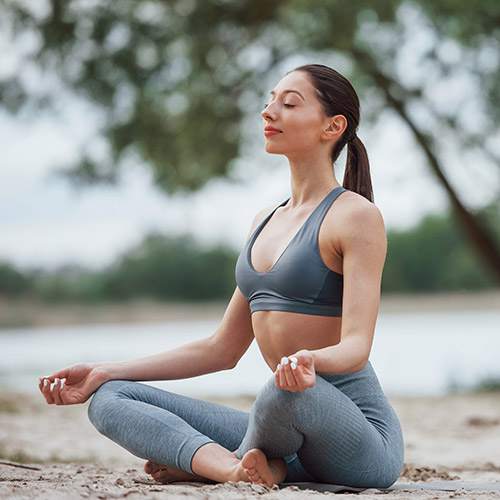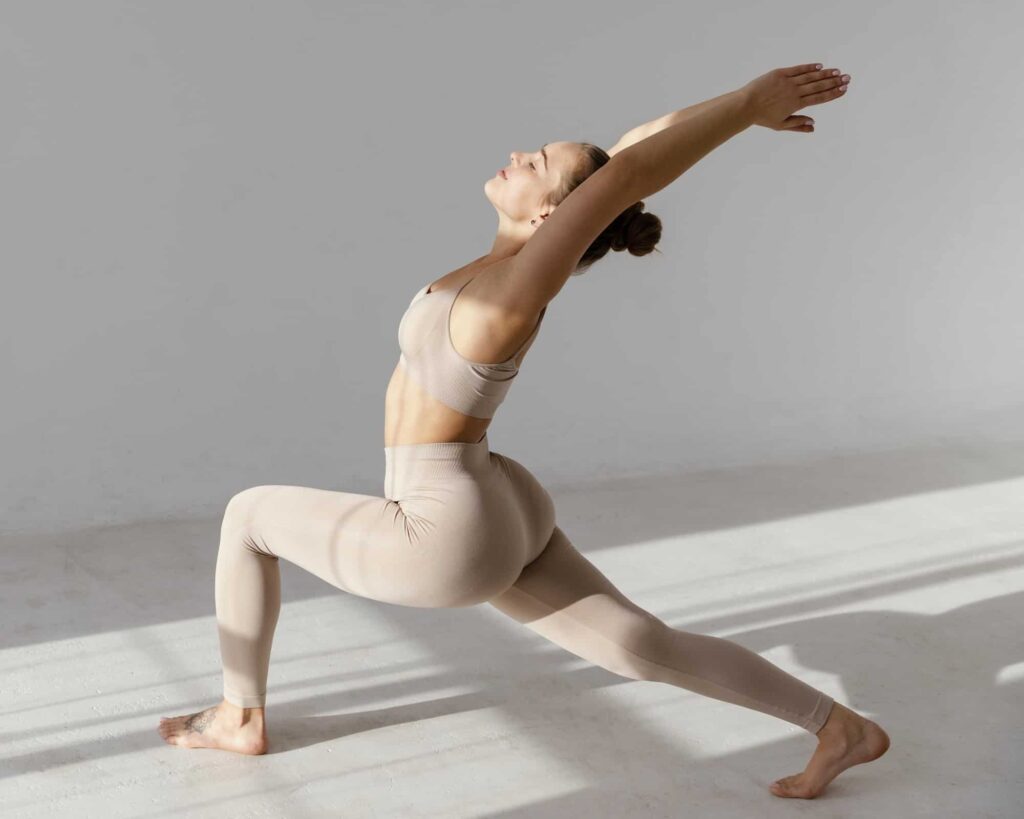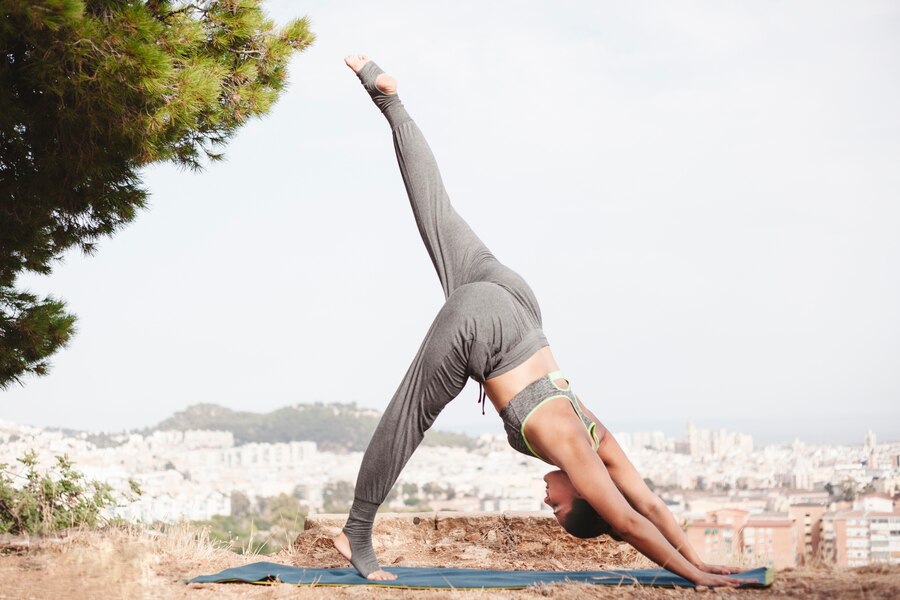WHAT IS YOGA ANATOMY – A GUIDE TO SAFE YOGA PRACTICES

What is yoga anatomy
Anatomy is the study of the structure of the human body. It covers the study of bones, joints, muscles, and internal organs. Yoga anatomy uses the knowledge of how the body is structured to further explain how the body works while performing various asanas and other movements. Understanding anatomical concepts, such as how joints and muscles work in relation to one another, will help a yoga practitioner deepen their mindfulness during their practice. With anatomical mindfulness, we can better understand alignment, weaknesses, strengths, and imbalances in our body.Why is yoga anatomy important?
Learning yoga anatomy is important in order to maintain safety in your practice. Developing an understanding of yoga anatomy will help prevent injuries and facilitate the healing process for existing injuries. Taking the time to learn yoga anatomy will also help to advance your personal practice or teaching skills. Having knowledge of yoga anatomy and how the body works throughout the yoga practice will help guide you to create functional asana sequences for yourself or for your students. When we understand how the human body works during yoga practice, we are better able to help ourselves and our students make meaningful connections to the practice, how it happens, and why we practice.What is the difference between anatomy and yogic anatomy
Anatomy is a broad term that describes the study of the structure of the human body. Basic anatomy will teach you about bones, joints, muscles, and the internal organs. Anatomy will give a fundamental education on various parts of the human body and how they interact together. However, studying only fundamental anatomy may leave you wondering how to apply the information to your everyday life. Yoga anatomy is a specific form of anatomy that covers how various parts of the human body will interact with each other when performing yoga asanas and various movements. Yoga anatomy uses all of the concepts taught in basic anatomy. However, unlike a basic anatomy course, yoga anatomy will teach you how to apply certain anatomical concepts to your yoga practice and movement in daily life. Yoga anatomy will teach a practitioner how to put their anatomy education into action. Learning yoga anatomy will ensure that your anatomy education does not go to waste, and instead becomes a tool that you can use in your everyday life.How does yoga anatomy keep us safe?
Yoga anatomy uses the knowledge of how the body works to explore movement and yoga asana. In order to practice asana safely, it is important to understand how our bones, muscles, and joints work together to perform a movement. Without this understanding, a practitioner is at increased risk for injury. This is because yoga anatomy helps us to understand our body’s strengths, weaknesses, and imbalances by teaching us certain signs, sensations, and signals that are associated with the strengths or weaknesses. When we use yoga anatomy to understand our limitations and how our body works, we can perform asana mindfully – being careful not to push too hard while still making an educated effort to improve our practice in a safe and effective way.Why do yoga teachers need to know anatomy?
An understanding of yoga anatomy is an important tool that every yoga teacher should have. Yoga anatomy teaches us how our bones, joints, and muscles work together to perform asanas and various movements. Every yoga teacher should have this knowledge in order to guide their students through a safe and functional practice. When a teacher understands how the body works, they can use this knowledge to help their students improve their weaknesses and understand their strengths. A yoga teacher can also use yoga anatomy to create structured, theme oriented asana sequences for their students. Many yoga students use asana practice as a way to explore and learn about their body, which can result in many questions. When a yoga teacher has a good understanding of yoga anatomy, they can answer their students’ questions and build trust and respect in the classroom..How to learn anatomy for yoga
Whether you’re a seasoned yoga teacher or just practicing yoga for your own personal development, yoga anatomy is an important topic for all practitioners to know. If you are interested in learning yoga anatomy there are many ways to do so:Bachelors of Science Degree in Yoga – By pursuing a bachelors of science degree in yoga, you will learn the necessary skills to become a working professional in the yoga field. This includes learning a large amount of yoga anatomy and physiology. This choice is great for those practitioners who want to become a qualified yoga instructor or yoga therapist.
Masters of Science Degree in Yoga – If you have completed your bachelors of science degree in yoga and you’re looking for further education in yoga anatomy and other yogic concepts, pursuing a masters degree in yoga can be the next step. This choice is great for qualified yoga practitioners who already have a solid understanding of yoga anatomy and have completed the educational requirements necessary to pursue this degree.
Yoga Teacher Training Course – For those practitioners who are looking for an introductory level of yoga anatomy, completing a yoga teacher training course is a great option. In a yoga teacher training course, you will learn about yoga asana, pranayama, and many other yogic practices along with yoga anatomy. A yoga teacher training course will teach you the fundamental concepts of yoga anatomy, how the body works, and how to start incorporating this knowledge into your yoga practice and daily life.
Books and Media – If you’re just starting your journey in yoga and yoga anatomy or you’re not quite ready to commit to a teacher training course or a degree in yoga, books and media can be useful resources. Recommended books, such as Light on Yoga by B.K.S. Inyengar, teach about yogic concepts including yog asana and the alignment of various postures. There are also many videos online that teach yoga anatomy concepts and asana alignment for all levels of practitioners. By reading and watching videos about the alignment and anatomy of different postures, you can begin to incorporate the information into your own practice. However, it is always recommended to learn yoga anatomy and alignment from qualified teachers in person in order to get the best quality of education. Books and media are a great place to start but they should not be relied on completely for your yoga anatomy education.



